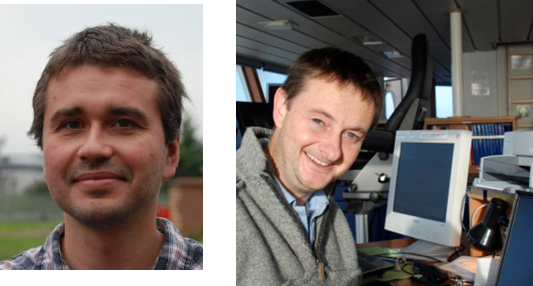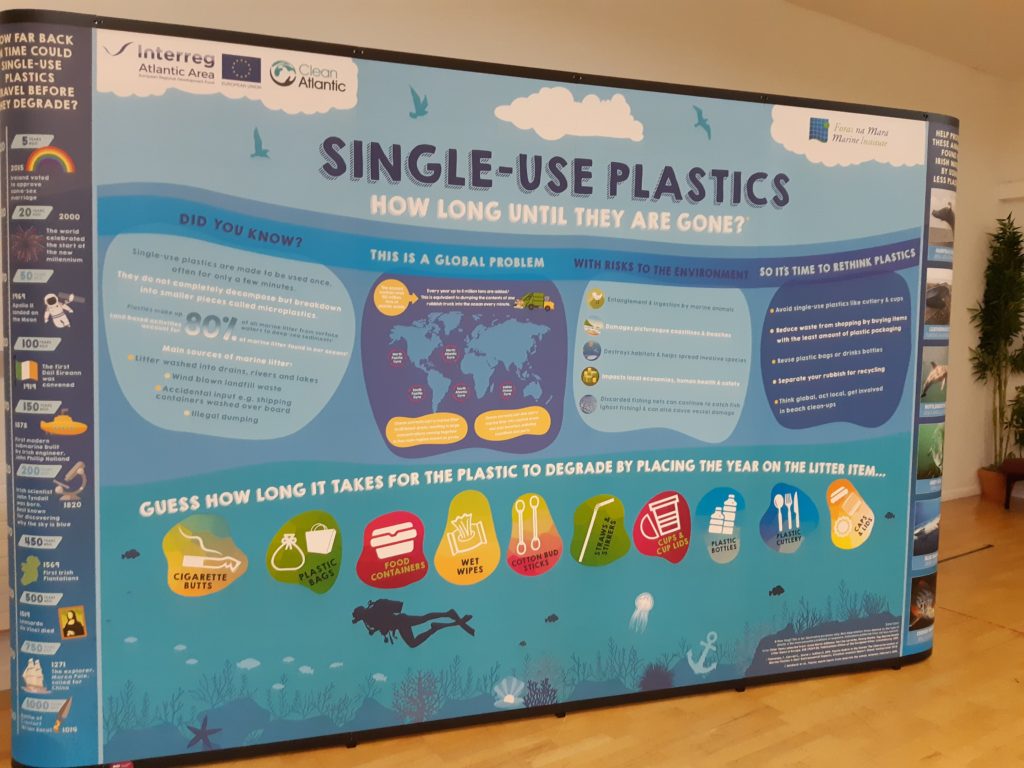Interview to the Marine Institute

Today we are interviewing Tomasz Dabrowski from the Marine Institute.
Question: Why did you join the CleanAtlantic project?
Answer: Marine Institute is the State agency responsible for marine research, technology development and innovation in Ireland. We provide scientific and technical advice to Government to help inform policy and to support the sustainable development of Ireland’s marine resource. Many of the policies advised by and co-developed by the Institute concern the marine litter issues. These are, for example, The Integrated Marine Plan for Ireland, Harnessing Our Ocean Wealth, which provide a policy framework for the sustainable development and protection of Ireland’s marine resource. Other policy instruments include the Marine Strategy Framework Directive, of which Descriptor 10 states that Marine Litter Properties and quantities of marine litter do not cause harm to the coastal and marine environment. Ireland is also a signatory of the OSPAR Convention for the Protection of the Marine Environment of the North-East Atlantic. OSPAR Regional Action Plan to reduce marine litter is also developing measures designed to complement EU measures to reduce marine litter. Ireland co-leads a number of these actions. Whilst coastline surveys for mapping of litter are being carried out in Ireland and seabed litter data is being collected as part of the Annual Irish Groundfish surveys, studies investigating the fate of litter (i.e. how litter is carried out by ocean currents) had not been carried out prior to the CleanAtlantic project. Joining the project presented an excellent opportunity to carry out such research and to try to find answers to the following questions:
- Where does the litter go to from the sources?
- What are the natural litter hot-spots in Ireland’s seas?
- How to tackle the litter issues?
Question: The Marine Institute contributed to several work packages in the project and particularly on modelling. How did you experience that role in CleanAtlantic?
Answer: Participation in the project was exciting, enjoyable and very smooth due to a very clearly defined objectives and the work plan and an excellent work done by CETMAR, as the project coordinators, as well as the engagement and dedication from all partners involved to include an excellent advisory role and support from the Associated Partners. It is truth that our main involvement was in the modelling work package and this was a truly enjoyable endeavor. The brainstorming sessions with other scientists involved in the modelling work were very stimulating and the feedback from other work packages very helpful. I only have positive memories from the collaborative work in the project.
Question: What did you develop throughout the project? How did the project influence your work?
Answer: Two items that I would like to highlight here comprise of a new tool for mapping and modelling marine litter distribution and an awareness raising tool. The former was developed by our partners in the project and acquired by us to be run within our own modelling system. It is so called a Lagrangian particle tracking model that has been expanded within the project to include options for modelling the transport pathways of floating, slowly sinking and fast sinking litter. Our partners provided us also with a visualization software that facilitates statistical processing and mapping of the results from the simulations. We successfully executed simulations for hypothetical scenarios of litter entering Ireland’s seas from the rivers and the ports as well as the simulations aiming at identification of natural litter accumulation zones, whereby the entire ocean around Ireland was seeded with litter and its transport then simulated by the tool, which over an appropriately long time period resulted in the accumulations in certain areas. Another development in the project is an interactive educational stand that is aiming at raising awareness amongst the school children and the general public as to how long it takes for several litter types to degrade in the marine environment. The title of the stand is ‘Single Use Plastics – How Long Until They Are Gone?’. It is of substantial size and there is an informative section and an interactive section whereby the visitors are expected to place magnets showing number of years on the appropriate litter item. To put things in the context, some well-known events in the Irish history are displayed on the stand and put on a timeline. We and our local partners used the stand on several occasions, receiving great feedback from the visitors, before the covid pandemic put a halt to the awareness raising activities.

Question: What is your best CleanAtlantic memory?
Answer: My best CleanAtlantic memory is related to the stakeholders’ workshop that I and my colleagues at the Marine Institute had a privilege to organize in Ireland. I was blown away by the positive response from invited stakeholders, excellent attendance and a dedication and enthusiasm for tackling marine litter issues shown by the participants. It was a great day of learning about all the fantastic initiatives taking place in Ireland and it was good to see high level interest from Irish stakeholders in the CleanAtlantic activities presented by the project partners on the day.
Question: What did you learn from the project? How does inter-regional cooperation can foster the fight against marine litter according to you?
Answer: Inter-regional cooperation on marine research and marine related issues has long been recognized as a necessity in order to achieve desired outcomes. This especially applies to environmental concerns and CleanAtlantic is no exception here since marine litter does not respect regional and national borders. CleanAtlantic presented us with a fantastic opportunity to learn from and co-develop with the leading institutions in the Atlantic Area region, the methods, the tools and the actions aiming to tackle marine litter issues. One of the very tangible outputs concerning my day-to-day activities as an ocean modeler was the acquisition of a particle tracking model that was specifically designed to predict the trajectories of floating, slowly- and fast-sinking litter developed by our partners. Standardization of the use of such software ensures comparisons of alike with alike when analyzing the results from regional simulations carried out by several partners in the project and enhances validity of the conclusions.
Question: What are the future activities your organisation is planning regarding marine litter?
Answer: Apart from several international and EU policy instruments (e.g. MSFD’s Descriptor 10), tackling pollution and litter is part of the Healthy Marine Ecosystems theme in Ireland’s National Research and Innovation Strategy. The Marine Institute as the state agency will work in partnership with research funders and research performing organizations towards a successful delivery of this strategy. As regards the tools developed in the framework of CleanAtlantic, we intend to remain involved in awareness raising activities and we will put the interactive stand to a good use once the epidemiological situation permits and we will continue supporting studies and actions aiming at tackling the marine litter issues through ocean modelling. The Institute will also continue collecting data on litter from the bottom trawl surveys and reporting on same to the ICES DATRAS database.


 EN
EN PT
PT FR
FR